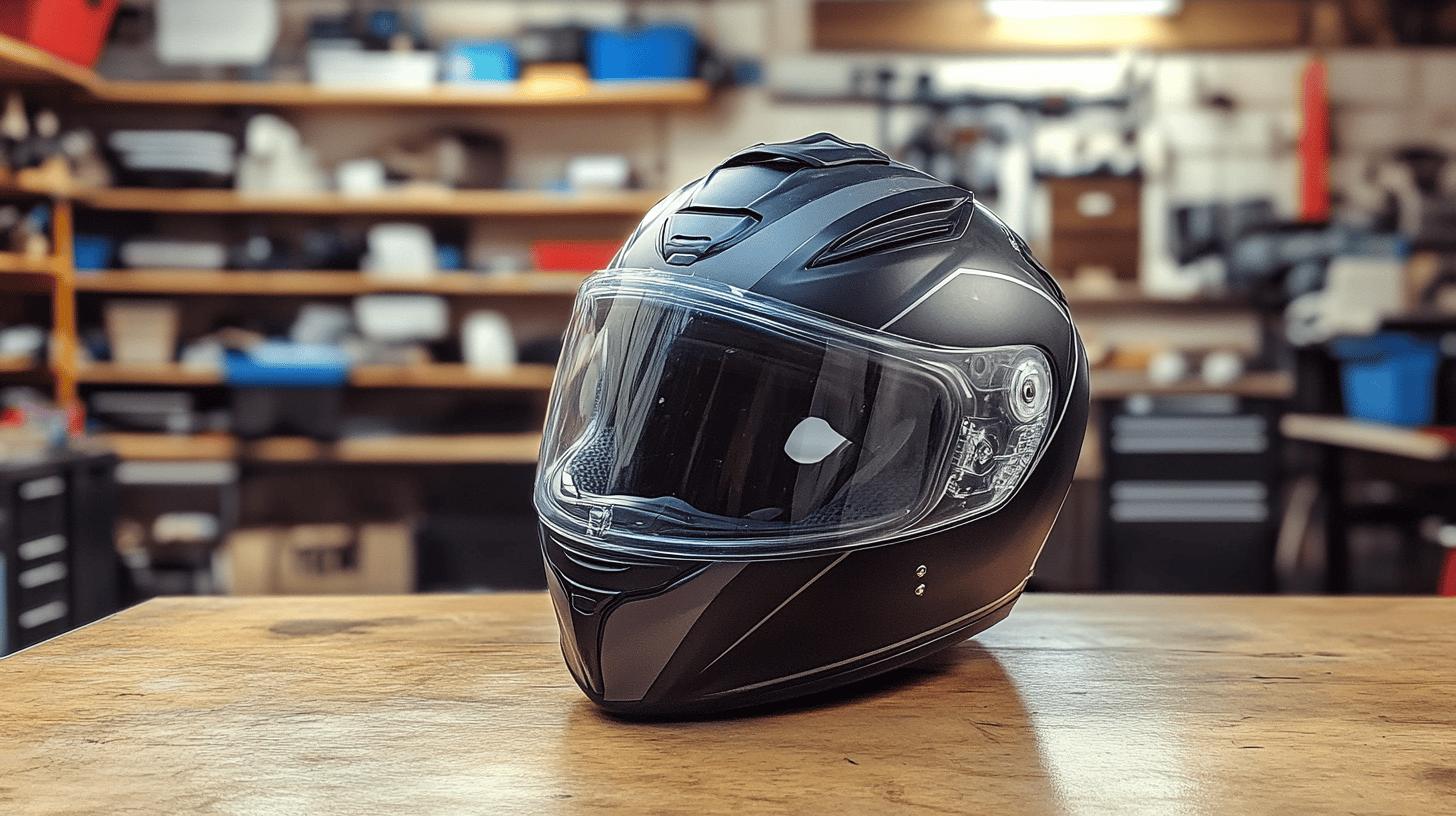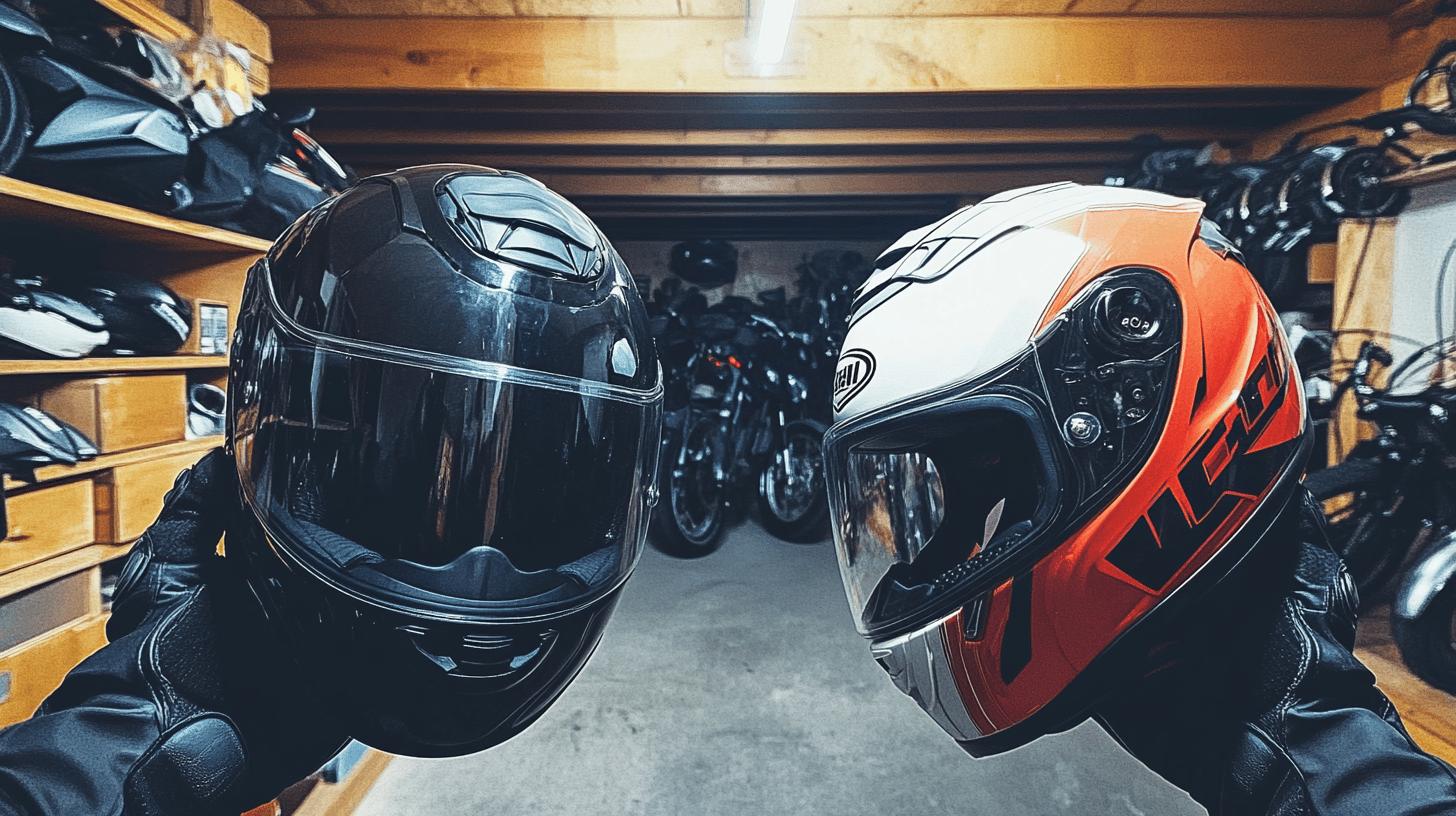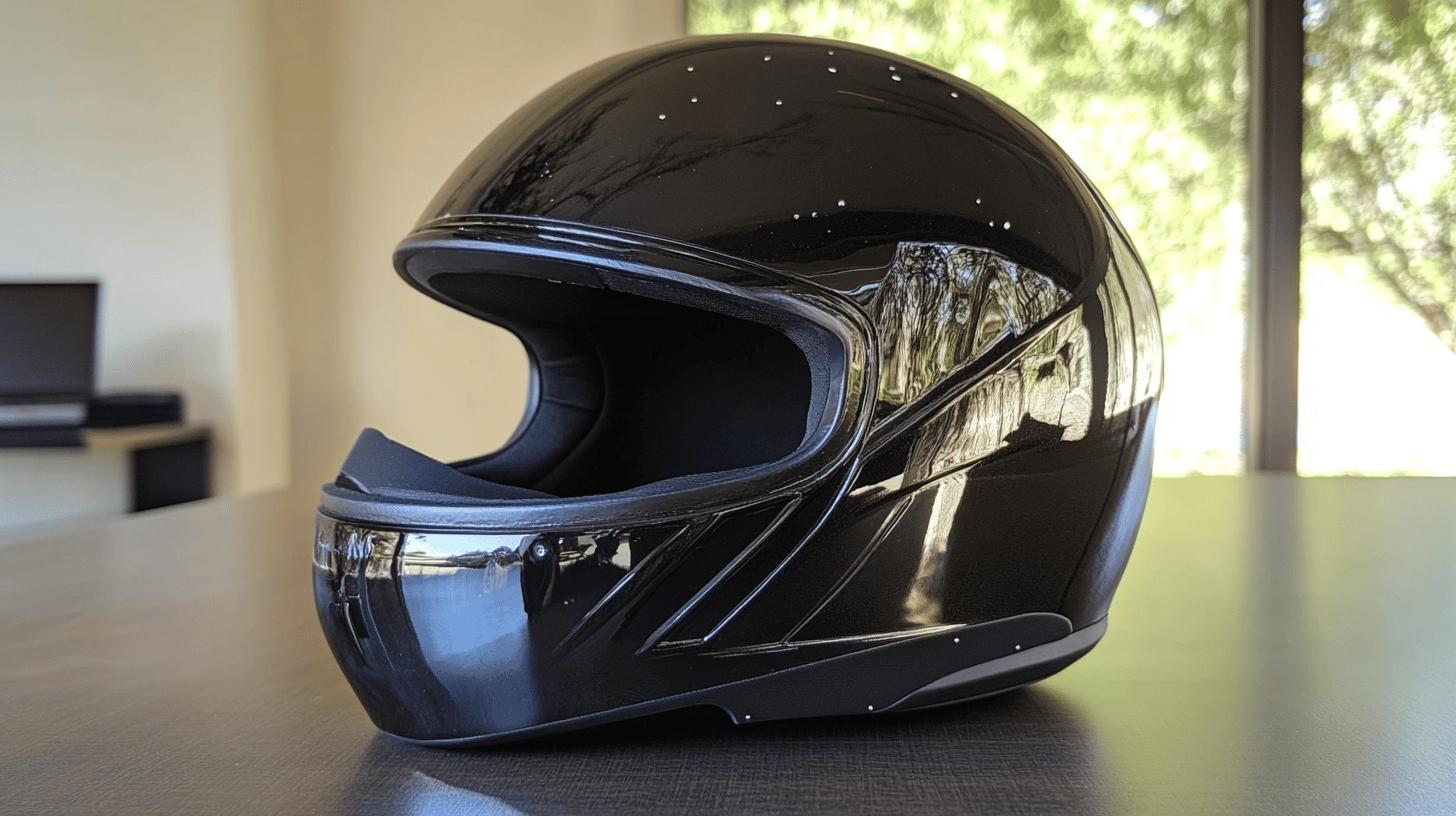Is the open-road calling you? If so, you might want a helmet that complements your riding style and enhances the journey. Enter the 3/4 motorcycle helmet, often underappreciated yet beloved by many enthusiasts.
Unlike its full-face counterparts, the 3/4 helmet wraps protectively around the top and sides of your head, leaving the face open to the elements. This design offers superior airflow and lets you enjoy the world around you while still providing crucial protection.
Stick around to discover how this type of helmet combines comfort and functionality for a riding experience like no other.
Understanding the 3/4 Motorcycle Helmet

A three-quarter motorcycle helmet, often referred to as a 3/4 or jet helmet, is designed to cover the rider's head and ears while leaving the face, especially the chin, exposed. This open-face design distinguishes it from full-face helmets, which provide complete facial coverage.
The structure of a 3/4 helmet allows for superior visibility and hearing, making it an attractive choice for riders navigating urban environments or enjoying scenic routes.
Its construction facilitates excellent ventilation, enhancing comfort in warmer climates. The design also makes it simple to put on and remove, lending itself to convenience for leisurely rides.
-
Coverage: Protects the head and ears, leaving the face open.
-
Ventilation: Offers significant airflow, keeping the rider cool.
-
Ease of Use: Simple to put on and take off.
-
Visibility: Provides an unobstructed field of view.
-
Communication: Enhances the ability to hear and speak clearly.
Riders often gravitate towards 3/4 helmets due to the comfort and freedom they provide. The open design not only allows for a cooler ride but also enhances the sensory experience by granting greater interaction with the surroundings.
This makes them particularly appealing for those who enjoy a more immersive riding experience, valuing the balance of protection and the enhanced connection to their environment.
Comparing Helmet Types: 3/4 vs. Full-Face

When comparing motorcycle helmet types, a significant distinction lies between 3/4 helmets and full-face helmets. The most notable difference is the presence of a chin bar in full-face helmets, offering superior protection for the face, chin, and jaw. This design makes full-face helmets highly effective in preventing traumatic brain injuries during accidents.
Conversely, 3/4 helmets lack a chin bar, leaving the face exposed and thus less protective against facial injuries. While both helmet styles can meet safety standards like DOT certification, full-face helmets provide comprehensive coverage that is particularly beneficial for high-speed highway riding.
In terms of comfort and ventilation, 3/4 helmets excel due to their open-face structure, which allows increased airflow and reduced weight. This makes them ideal for use in warmer climates and during leisurely rides where comfort is prioritized.
Full-face helmets, although offering substantial protection, can sometimes feel restrictive and warmer due to their enclosed design. Riders often choose 3/4 helmets for urban commutes or scenic tours where the riding pace is slower, and enhanced sensory interaction with the environment is desired.
The decision between these helmet types often boils down to balancing safety and comfort. While full-face helmets provide unmatched safety, especially for the face, they may compromise on comfort and ventilation.
On the other hand, 3/4 helmets offer a greater sense of freedom and comfort but require riders to weigh the trade-off between facial protection and the immersive riding experience. Choosing the right helmet largely depends on individual riding needs and preferences, whether prioritizing maximum protection or a more comfortable, ventilated ride.
| Helmet Type | Protection Level | Comfort Level | Use Case |
|---|---|---|---|
| Full-Face | High (includes chin and jaw coverage) | Moderate | High-speed highway riding |
| 3/4 | Moderate (excludes chin coverage) | High | Urban or scenic environments |
Safety Features and Standards of 3/4 Helmets

What makes a 3/4 motorcycle helmet safe? A crucial element is its DOT certification. The Department of Transportation (DOT) sets specific safety standards that helmets must meet to be legally sold and used in the United States.
This certification ensures that a helmet can adequately protect a rider during impacts. While both full-face and 3/4 helmets can achieve DOT certification, the latter offers a blend of safety with enhanced comfort and ventilation.
Even though 3/4 helmets lack full facial coverage, they are significantly safer than riding without any head protection, as safety research consistently shows the life-saving impact of wearing helmets.
-
Shell Construction: Made with durable materials such as polycarbonate or fiberglass for impact absorption.
-
Impact Resistance: Designed to withstand significant impact forces to protect the head.
-
Strap Security: Equipped with strong chin straps to ensure the helmet stays securely in place during a crash.
-
Padding and Liner: Includes an energy-absorbing inner liner to cushion the head during impact.
-
Visibility Features: Often equipped with reflective elements or bright colors to enhance visibility on the road.
These safety features work together to enhance rider safety by minimizing the risk of head injuries. The shell construction and impact resistance are fundamental in absorbing crash forces, while the strap security ensures the helmet remains on the rider's head.
The inner padding provides comfort and additional protection by reducing the impact on the skull. Meanwhile, visibility features help prevent accidents by making riders more noticeable to other road users. Each of these elements is vital in creating a helmet that not only meets regulatory standards but also provides practical safety benefits for everyday use.
Choosing the Right 3/4 Helmet for Your Needs

The significance of fit and comfort in choosing a motorcycle helmet cannot be overstated. How does a proper fit enhance safety and comfort? Ensuring the correct fit is vital because an ill-fitting helmet can compromise safety and lead to discomfort during rides.
A snug fit prevents the helmet from shifting during a crash, maintaining its protective positioning. Comfort is also crucial, as it influences a rider’s willingness to wear the helmet consistently.
The internal fit of a 3/4 helmet varies, typically available in round oval, intermediate oval, and long oval shapes, accommodating different head forms. Selecting the correct shape ensures both safety and prolonged comfort.
Helmet Sizing and Fit
How do you measure for the right helmet size? Follow these steps:
-
Measure Head Circumference: Use a flexible tape measure to wrap around the widest part of your head, about an inch above your eyebrows.
-
Consult Manufacturer's Size Chart: Match your measurement with the size chart provided by the helmet manufacturer to identify the correct size.
-
Try the Helmet On: Place the helmet on your head, ensuring it sits snugly without pressing painfully on any point.
-
Check for Movement: With the chin strap fastened, shake your head gently. The helmet should move slightly, but not slide off.
-
Wear for a Period: If possible, wear the helmet indoors for a while to identify any pressure points or discomfort.
Personal preferences such as color and design also play a role in selecting a 3/4 helmet. While safety features are paramount, riders often look for aesthetics that match their style or visibility needs. Bright colors or reflective designs can enhance visibility, contributing to safety. Some may prefer matte finishes for a sleek appearance, whereas others opt for vibrant patterns to express personality.
Testing helmet comfort before purchase is crucial. Why test it? Wearing the helmet for an extended period helps determine if it maintains comfort or causes discomfort due to pressure points. This practice ensures that the helmet not only fits well upon initial try but remains comfortable during longer rides. Consistent comfort encourages regular use, ultimately providing the best protection the helmet can offer.
Pros and Cons of 3/4 Motorcycle Helmets

Three-quarter motorcycle helmets are favored for their comfort, ventilation, and communication advantages. They provide an open design that enhances airflow, keeping riders cool during warm weather.
This open-face structure also improves riders' ability to hear surrounding traffic and communicate easily without removing the helmet. The design allows for a wide field of vision, making it easier for riders to stay aware of their environment.
The lightweight nature of 3/4 helmets further contributes to reduced neck strain, making them a comfortable choice for long rides.
-
Reduced facial protection, leaving the face exposed in a crash
-
Increased wind noise due to open design
-
Limited eye protection, requiring additional eyewear
-
Vulnerability to weather elements like rain and debris
-
Lower impact resistance compared to full-face helmets
In situations where comfort and sensory experience are prioritized, the benefits of a 3/4 helmet can outweigh its drawbacks. Riders in urban settings or on slower, scenic routes often prefer the enhanced visibility and interaction with their surroundings.
The helmet's comfort and ease of use make it suitable for riders prioritizing leisurely rides over high-speed protection. While they may not match the full protective capabilities of full-face helmets, 3/4 helmets serve as a practical choice for those seeking a balance between safety and an immersive riding experience.
Final Words
3/4 motorcycle helmets strike a balance between comfort and moderate protection. They offer excellent ventilation and ease of use, making them ideal for leisurely rides in warm conditions. While not as protective as full-face helmets, their DOT certification ensures basic safety.
When selecting this style, consider fit, design, and use case to enhance safety. Embracing what is a 3/4 motorcycle helmet can lead to a more enjoyable riding experience, blending comfort with safety awareness.
FAQ
What is a three-quarter motorcycle helmet?
A three-quarter motorcycle helmet, or 3/4 helmet, covers the head and ears, leaving the face exposed. This design balances protection with visibility and hearing, enhancing the riding experience.
Is it safe to wear a 3/4 helmet?
Wearing a 3/4 helmet offers significant protection compared to riding without one. It provides head and ear coverage, though lacks a chin bar, offering less facial protection than full-face helmets.
What are the safety features and standards of 3/4 helmets?
3/4 helmets can be DOT certified, meeting specific safety standards. Key safety features include robust shell construction, effective impact resistance, secure straps, proper fit, and compatibility with additional safety gear.
How do you choose the right 3/4 helmet?
Choosing the right 3/4 helmet involves focusing on comfort and fit. Consider the helmet's shape to match your head type, measure circumference accurately, and ensure it aligns with the manufacturer's size chart.
3/4 helmet vs. full-face: What are the differences?
Full-face helmets provide more comprehensive protection, including chin and jaw coverage, while 3/4 helmets offer better ventilation and comfort, particularly in warmer conditions, with less facial protection.
What are the pros and cons of 3/4 motorcycle helmets?
Pros include enhanced comfort, ventilation, and communication capabilities. Cons involve less facial protection, potential wind noise, exposure to weather, and increased risk of debris and insects impacting the face.

Ryan Thompson is a 35-year-old sport bike enthusiast known for his adventurous spirit. With years of weekend rides and exploring new roads, Ryan brings fresh insights and firsthand experience to ProtectiveGearz. His energetic approach and passion for the latest gear make him a trusted source for riders seeking up-to-date advice.



